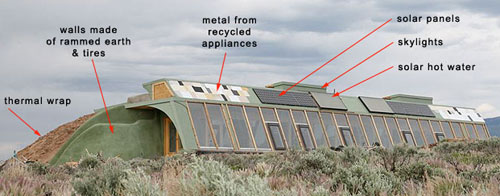Wk1. Principles and Practices
- Assignment: Plan and sketch a potential final project.
Digital Revolutions
Analogue to digital communication Analogue to Digital computation Analogue to digital fabrication
Gordon Moore’s Law - article, 1965, processors have been doubling in power every year
Connecting computers to machines, has a long history, MIT 1950’s
Claude Shannon, by suing a symbol to communicate you can communicate reliably with an unreliable devices
The meaning of digital is much more subtle, the father of information theory, by using a symbols.
###The casual meaning of Digital Fabrication
The casual meaning of digital fabrication is controlling machines to make things, the deep meaning is coding for the construction of materials themselves.
###Wikipedia
“In 1936, Shannon began his graduate studies in electrical engineering at MIT, where he worked on Vannevar Bush’s differential analyzer, an early analog computer. While studying the complicated ad hoc circuits of this analyzer, Shannon designed switching circuits based on Boole’s concepts. In 1937, he wrote his master’s degree thesis, A Symbolic Analysis of Relay and Switching Circuits.”
Using this property of electrical switches to implement logic is the fundamental concept that underlies all electronic digital computers. Shannon’s work became the foundation of digital circuit design, as it became widely known in the electrical engineering community during and after World War II.
The Fablab today.
1000 fablabs, roughly one fablabs per city today. The Fablab we are in today is just like the minicomputer, which like one upon a time computers were used in workgroups before the advent of personal computers. So the Fablab is in essence like one machine.
The original Fablab was about a $100,000 investment.
One machine cannot do everything, but the collection of machines can used together can make almost anything.
All the amazing examples of fablabs. Floating fablabs. Belfast. Israel/Palestine
The Fablabas have grown in reach:
BioAcademy: How to Grow almost Anything!
FabAcademy, is a distributed educational network. The technology changes periodically in the labs but in a coordinated way.
Changing educational framework.
Seymour Paper, pioneer in
Barcelona and FabCities: creating sustainable cities. Have the city to sustainably produce what it consumes.
Reversing urbanisation: Paval Fablab, India
Global Humanitarian Lab
- Instead of
Fab14 in Toulouse
FabCity Summit in Paris 12 and 13 of July 2018 Fab Summit in Toulouse 16 to 20 of July —
The goal is for Fablabs to make Fablabs: We are at the end of purchasing fablabs and beginning, like the internet, curating a network where fablabs can make fablabs.
Father of computational architecture, a self-reproducing machine.
The research of machines making machines will take another 50 years.
Learning digital fabrication, but the bigger question is if anyone can make anything anywhere, then how does this affect society, governance?
—
Designing a Final Project
If you are in anyway new like like me to the exponential powers of digital fabrication, choosing a final project is in no way easy. On the one hand, there simply too many interesting ideas and directions to focus FabAcademy! The bewildering variety and complexity of new technologies, programs, ideas, workflows, hacks, CADS, CAMS, Mods, Tool-paths, bits, bobs and gerbl can leave the ATTiny 45 feeling rather fried. Or at the very least leave you with that discouraging feeling of when you’ve lost your origin.
To recover my X,Y,Z, I took (and recommend) taking regular breaks from your screens and programs. I discovered that it is not only good but necessary to return to the physical world and to nature, power-down, and find a quiet place and just breathe. There is no end of inspiration to be found in simple things.
Earthship systems
In a world that is still chugging on fossil fuels, and totally unsustainable models of production and over-consumption, one of my main inspirations has been learning of ways to become more self-sufficient in my coexistence with the world around me.

Having helped build an Earthship last year in France, I was inspired by both the low-tech approach to autonomous and ecological housing but also intrigued by how many of their interior systems could be easily fabricated in a lab.
Earthships are off-grid autonomous homes that are built using natural and recycled materials such as earth-packed automobile tires, bottles and aluminium cans. As a complete living system, Earthships address six basic human needs:
- Thermal/solar heating and cooling.
- Energy through solar and wind.
- Water harvesting and storage.
- Food production and indoor greenhouse.
- Self-contained sewage treatment and waste management.
- Recycling waste, water and materials.
This diagram, gives you some idea of the busy guts of an Earthship:

WOM
The water organising module (WOM) which is an easily assembled water filtration system that filters collected rainwater for household use and drinking. Another example to try and fabricate would be the recirculation pumps the Earthship uses to pump water back through the botanical cells. Equally applicable could be the water filtration systems. Again all these ideas have wider applications outside the Earthship
Wind Turbine
Another idea I though would be interesting to prototype for Fab Academy is an Vertical Axis Wind Turbine (VAWT) or sometimes known as a Savonius wind turbine. I know they have built these for in Taos, and from what I can gather there are a number of advantages of using a VAWT over a horizontal axis which is the more common/commercial variety.
In general, VAWTs are not as efficient as their horizontal-axis cousins, but they are better suited to urban environments where wind can come from all different directions.
Food production
Here the obvious project that would be fascinating to prototype would be an indoor Aquaponics system. Such a system has been done by Aquapioneers in the Barcelona Green Fablab and is developeing and expanding in interesting ways.